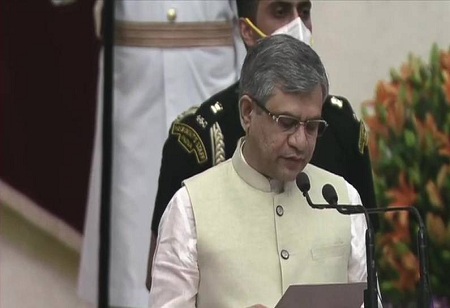Ashwini Vaishnaw, an
auto component industry entrepreneur turned politician has been appointed as India’s
railway minister. One of the biggest responsibilities for him is to successfully handle the operationalization of private trains on the railway network. While
Ashwini Vaishnaw will also be instrumental in administering the cadre restructuring, that has been initiated by Piyush Goyal, he is making an entry into this segment when the national transporter has been finding ways to generate non-fare revenue using various streams.
It includes the leasing of its broad pool of vacant lands and offering opportunities for Public Private Partnerships for both the trains as well as the stations. The Indian Railways sector has been scouting for many private investments in order to not only upgrade its facilities but also to take on the competition from domestic airlines that are picking at its passengers of the AC class.
The Journey of Ashwini Vaishnaw
Born in Jodhpur, Rajasthan, Ashwini Vaishnaw is a former Odisha cadre IAS officer from the 1994 batch. He is also an M.Tech from the Indian Institute of Technology, Kanpur. He has handled critical responsibilities for over fifteen years and has contributed towards the public-private partnership framework in infrastructure, and this experience is something that will help him in the railway sector.
During his term as an IAS officer, Ashwini Vaishnaw served as the District Magistrate-cum-Collector of districts such as Balasore and Cuttack. His bureaucratic capability came to the fore and was accentuated when Odisha was hit by a super cyclone in the year 1999. At least 10000 people were killed in this cyclone. As a collector of the coastal Balasore district, Ashwini Vaishnaw gathered information regarding the cyclone from a US Navy website and forwarded the necessary reports to the chief secretary at frequent intervals and this information facilitated the Odisha state government in taking advanced measures that helped in saving lives of multitudes.
Vaishnaw worked in Odisha till 2003 and in 2008 he quit government service and left for pursuing an MBA from the Wharton University, USA.
He has held leadership roles across big players such as General Electric and Siemens. After returning from the USA, and working for major global players, Ashwini Vaishnaw set up two automotive components manufacturing units in Gujarat - Three Tee Auto Logistics Private Ltd. and Vee Gee Auto Components Private Ltd.
Ashwini Vaishnaw will also hold two other portfolios of Minister of Communications and Minister of Electronics & Information Technology. Also, the 51-year-old BJP leader has been nominated as a member of the Press Council of India, for three years, in the month of April.
Ashwini Vaishnaw’s achievements, the leadership roles he played in major global companies, and his journey as an entrepreneur in the Auto component industry emphasize the significance of Industry leaders joining politics and how would their capabilities help them in running the administration effectively and efficiently. Another such example is Nitin Gadkari – an industrialist from Maharashtra, who is the current Minister for Road Transport & Highways in the Government of India.
Auto Component industry in India
“The performance of the Indian auto component industry in fiscal 2020-21 would be a little better than that of the vehicle manufacturing sector as its decline in growth is estimated to be in the range of 10% - 12%,” Deepak Jain, President, Auto Component Manufacturers Association (ACMA), the apex body representing auto parts makers, told ETAuto.
“We have not yet prepared the actual numbers but we expect that the auto parts industry has performed better than the vehicle industry and it has degrown less than the vehicle industry in FY21,” Jain said. The overall automobile sales degrew by 14% in the same period.
In 2020, India exported 29 percent of the production, which is worth USD 14.5 billion, to one hundred and sixty countries. Nevertheless, the auto components share in the international/global trade is diminutive, 1.3 percent of the 1.3 trillion US dollars, wherein there is only 1 Indian enterprise that is featuring in the global top 10 component manufacturers.
Predictions for FY22
There would be an increase in the revenue in Financial Year 2022 in the auto components industry owing to demand from Original Equipment Manufacturers and exports increase, according to CRISIL. While the replacement market looks to have better demand, the surge in OEM demand will trickle down to the automotive components industry. This could be observing a revenue growth of 20 percent to 23 percent in the next fiscal year.
Exports that contribute to over 25 percent of the revenue, will be supported by stable demand from the United States and stumbled recovery in the European Union; which are the regions accounting for 60 percent of automotive components exports of India.
ACMA expects that the Production Linked Incentive (PLI) scheme will facilitate the Indian exports to double reaching USD 30 billion in the next 5 years. And this will result in having five to six Indian players in the top 50 global auto component manufacturers.
